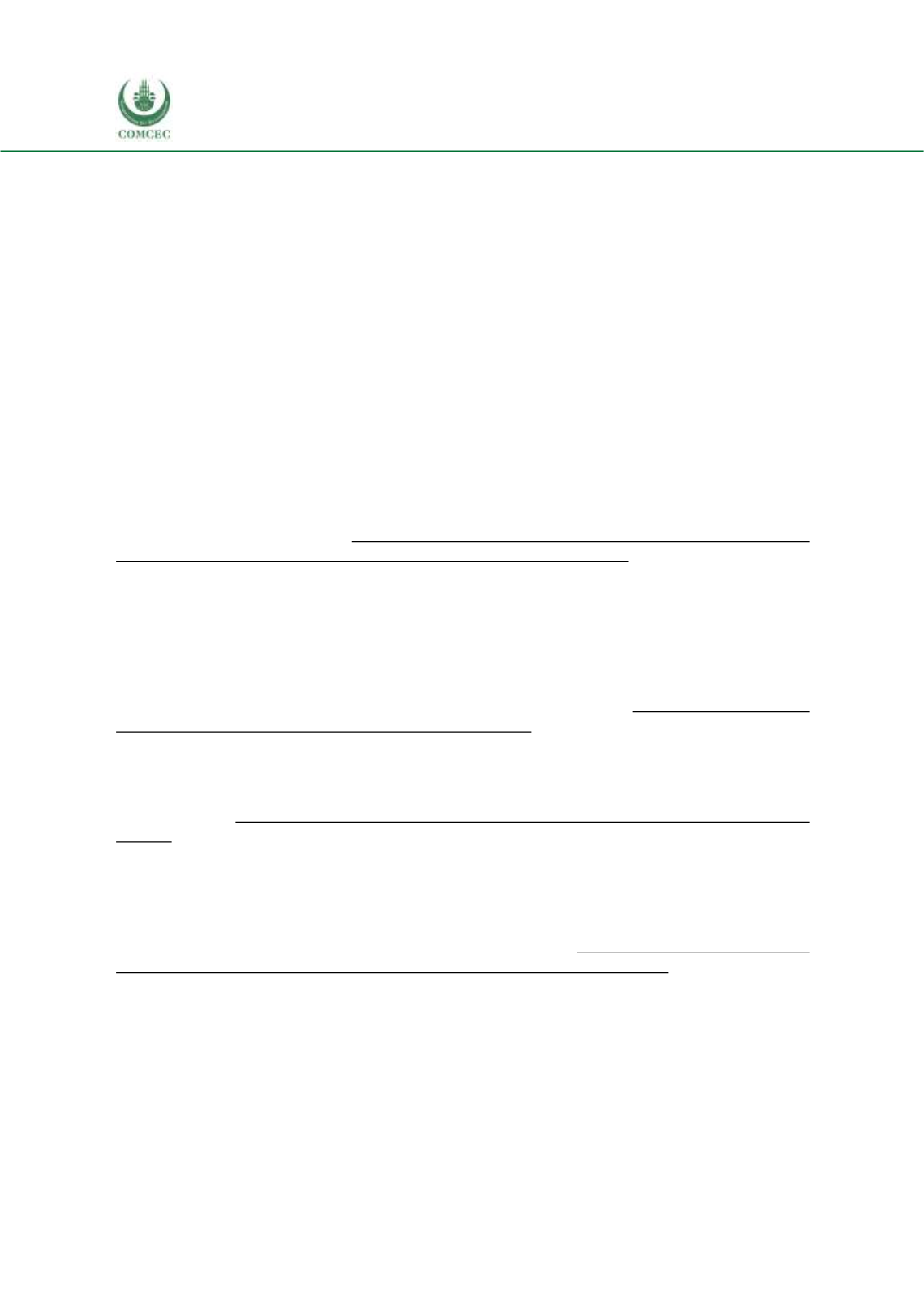

Reviewing Agricultural Trade Policies
To Promote Intra-OIC Agricultural Trade
74
4.1.1. Agricultural Trade with the OIC Countries
General overview
OIC member countries have been close trade partners for Turkey, and Turkey stands out as a
strong export hub in agricultural trade within the OIC (COMCEC, 2018b).
As shown in Table 4.2, the value of Turkey’s agricultural exports to the OIC countries has
increased from 3.3 billion USD in 2008 to 7.3 billion USD in 2016 (121% increase) with a
percentage share in total agricultural exports increasing from 29.7% to 42.5% during the 2008-
2016 period. The total value of Turkey’s agricultural imports from OIC countries is smaller than
its exports, demonstrating a trade surplus. The value of agricultural product imports from OIC
countries has been within a range of 1.2 billion USD to 2.2 billion USD during the 2008-2016
period. The share of OIC countries in Turkey’s total agricultural imports has decreased slightly
from 16.9% in 2008 to 15.9% in 2016.
Figure 4.5 shows the distribution of Turkey’s agricultural exports according to the three OIC
member country groups. Exports to the Arab group increased from 2.6 billion USD in 2008 to
6.1 billion USD in 2016, representing a share of 22.9% and 35.9% in total agricultural exports
for 2008 and 2016, respectively. The Arab group countries has the largest share in Turkey’s total
agricultural exports followed by the Asian group and the African group
.
The Asian group’s share
has been within the range of 4.5% and 7.3% during the 2008-2016 period. The share of Turkey’s
agricultural exports to the African group has been relatively stable throughout the time period,
reflecting a percentage share of 1% to 3%.
Figure 4.6 shows the distribution of Turkey’s agricultural imports according to the three OIC
member country groups. Imports from the African and the Arab groups increased from 0.2
billion USD each to 0.6 billion USD and 0.4 billion USD, respectively. These two groups have also
exhibited increasing shares within Turkey’s total agricultural imports. The Asian group has the
largest share and value in Turkey’s agricultural imports. However, the total value of the Asian
group decreased from 1.4 billion USD to 1.1 billion USD from 2008 to 2016. The corresponding
share decreased from 13.3% to 8.5% within the same period.
With regards to distribution of exports across country groups and product groups, Figure 4.7
shows that the Arab group countries is a significant market for Turkey’s agri-food product
exports. The share of the Arab group in Turkey’s total agri-food exports increased from a share
of 24.2% to 37.9% in 2016, reflecting more than 1/3 of Turkey’s global agri-food exports. The
share of the Asian group is within a range of 4.6% to 7.5% while the share of the African group
is within a range of 1.2% to 3.1%, reflecting stable but small shares in for Turkish agri-food
exports.
Examining the distribution of imports across country groups, Asian group countries have the
highest share of OIC countries in Turkey’s total imports of agri-food products, however the share
is declining. Figure 4.8 shows that the share of Asian group in Turkey’s total agri-food product
imports has declined from 14% in 2008 to 7% in 2016. Contrary to the Asian group, the share
of the African group and Arab group in Turkey’s total agri-food product imports have been
increasing, reflecting a probable shift of imports from the Asian group to the favor of Arab group
and African group.


















